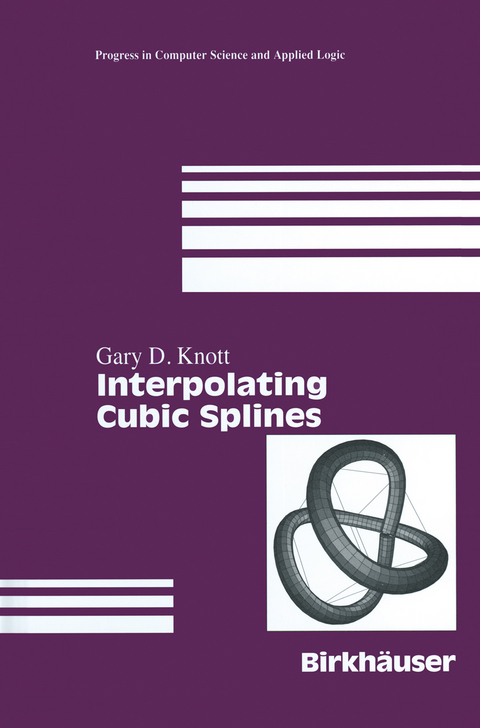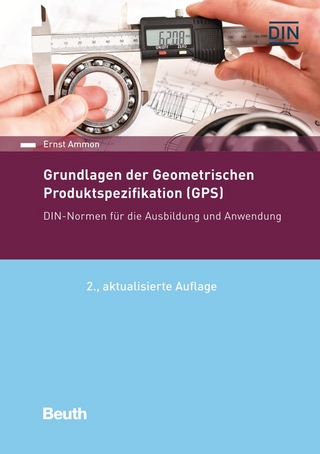
Interpolating Cubic Splines
Springer-Verlag New York Inc.
978-1-4612-7092-8 (ISBN)
A spline is a thin flexible strip composed of a material such as bamboo or steel that can be bent to pass through or near given points in the plane, or in 3-space in a smooth manner. Mechanical engineers and drafting specialists find such (physical) splines useful in designing and in drawing plans for a wide variety of objects, such as for hulls of boats or for the bodies of automobiles where smooth curves need to be specified. These days, physi cal splines are largely replaced by computer software that can compute the desired curves (with appropriate encouragment). The same mathematical ideas used for computing "spline" curves can be extended to allow us to compute "spline" surfaces. The application ofthese mathematical ideas is rather widespread. Spline functions are central to computer graphics disciplines. Spline curves and surfaces are used in computer graphics renderings for both real and imagi nary objects. Computer-aided-design (CAD) systems depend on algorithms for computing spline functions, and splines are used in numerical analysis and statistics. Thus the construction of movies and computer games trav els side-by-side with the art of automobile design, sail construction, and architecture; and statisticians and applied mathematicians use splines as everyday computational tools, often divorced from graphic images.
1 Mathematical Preliminaries.- 1.1 The Pythagorean Theorem.- 1.2 Vectors.- 1.3 Subspaces and Linear Independence.- 1.4 Vector Space Bases.- 1.5 Euclidean Length.- 1.6 The Euclidean Inner Product.- 1.7 Projection onto a Line.- 1.8 Planes in-Space.- 1.9 Coordinate System Orientation.- 1.10 The Cross Product.- 2 Curves.- 2.1 The Tangent Curve.- 2.2 Curve Parameterization.- 2.3 The Normal Curve.- 2.4 Envelope Curves.- 2.5 Arc Length Parameterization.- 2.6 Curvature.- 2.7 The Frenet Equations.- 2.8 Involutes and Evolutes.- 2.9 Helices.- 2.10 Signed Curvature.- 2.11 Inflection Points.- 3 Surfaces.- 3.1 The Gradient of a Function.- 3.2 The Tangent Space and Normal Vector.- 3.3 Derivatives.- 4 Function and Space Curve Interpolation.- 5 2D-Function Interpolation.- 5.1 Lagrange Interpolating Polynomials.- 5.2 Whittaker’s Interpolation Formula.- 5.3 Cubic Splines for 2D-Function Interpolation.- 5.4 Estimating Slopes.- 5.5 Monotone 2D Cubic Spline Functions.- 5.6 Error in 2D Cubic Spline Interpolation Functions.- 6 ?-Spline Curves With Range Dimension d.- 7 Cubic Polynomial Space Curve Splines.- 7.1 Choosing the Segment Parameter Limits.- 7.2 Estimating Tangent Vectors.- 7.3 Bézier Polynomials.- 8 Double Tangent Cubic Splines.- 8.1 Kochanek-Bartels Tangents.- 8.2 Fletcher-McAllister Tangent Magnitudes.- 9 Global Cubic Space Curve Splines.- 9.1 Second Derivatives of Global Cubic Splines.- 9.2 Third Derivatives of Global Cubic Splines.- 9.3 A Variational Characterization of Natural Splines.- 9.4 Weighted v-Splines.- 10 Smoothing Splines.- 10.1 Computing an Optimal Smoothing Spline.- 10.2 Computing the Smoothing Parameter.- 10.3 Best Fit Smoothing Cubic Splines.- 10.4 Monotone Smoothing Splines.- 11 Geometrically Continuous Cubic Splines.- 11.1 Beta Splines.- 12 Quadratic SpaceCurve Based Cubic Splines.- 13 Cubic Spline Vector Space Basis Functions.- 13.1 Bases for C1 and C2 Space Curve Cubic Splines.- 13.2 Cardinal Bases for Cubic Spline Vector Spaces.- 13.3 The B-Spline Basis for Global Cubic Splines.- 14 Rational Cubic Splines.- 15 Two Spline Programs.- 15.1 Interpolating Cubic Splines Program.- 15.2 Optimal Smoothing Spline Program.- 16 Tensor Product Surface Splines.- 16.1 Bicubic Tensor Product Surface Patch Splines.- 16.2 A Generalized Tensor Product Patch Spline.- 16.3 Regular Grid Multi-Patch Surface Interpolation.- 16.4 Estimating Tangent and Twist Vectors.- 16.5 Tensor Product Cardinal Basis Representation.- 16.6 Bicubic Splines with Variable Parameter Limits.- 16.7 Triangular Patches.- 16.8 Parametric Grids.- 16.9 3D-Function Interpolation.- 17 Boundary Curve Based Surface Splines.- 17.1 Boundary Curve Based Bilinear Interpolation.- 17.2 Boundary Curve Based Bicubic Interpolation.- 17.3 General Boundary Curve Based Spline Interpolation.- 18 Physical Splines.- 18.1 Computing a Space Curve Physical Spline Segment.- 18.2 Computing a 2D Physical Spline Segment.- References.
| Erscheint lt. Verlag | 15.10.2012 |
|---|---|
| Reihe/Serie | Progress in Computer Science and Applied Logic ; 18 |
| Zusatzinfo | XII, 244 p. |
| Verlagsort | New York |
| Sprache | englisch |
| Maße | 155 x 235 mm |
| Themenwelt | Sachbuch/Ratgeber ► Natur / Technik ► Garten |
| Mathematik / Informatik ► Informatik ► Theorie / Studium | |
| Informatik ► Weitere Themen ► CAD-Programme | |
| Mathematik / Informatik ► Mathematik ► Analysis | |
| Mathematik / Informatik ► Mathematik ► Angewandte Mathematik | |
| ISBN-10 | 1-4612-7092-8 / 1461270928 |
| ISBN-13 | 978-1-4612-7092-8 / 9781461270928 |
| Zustand | Neuware |
| Informationen gemäß Produktsicherheitsverordnung (GPSR) | |
| Haben Sie eine Frage zum Produkt? |
aus dem Bereich


